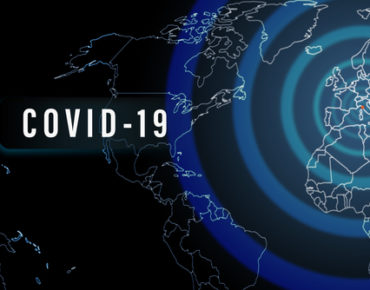COVID-19 HPC Consortium Expands to Europe, Reports on Research Projects

The COVID-19 HPC Consortium, a public-private effort delivering free access to HPC processing for scientists pursuing coronavirus research – some utilizing AI-based techniques – has expanded to more than 56 research teams and extended to supercomputing centers and programs in Europe.
IBM, which in March helped form the consortium with the White House Office of Science & Technology, has issued an update on the program’s growth and on its research work. Members of PRACE, the Partnership for Advanced Computing in Europe, have pledged to lend their supercomputing platforms to the effort, including the Swiss National Supercomputing Centre's Piz Daint, the sixth ranked supercomputer in the world, according to the Top500 supercomputing list. And the UK Research and Innovation (UKRI) will make available three of its supercomputers, including ARCHER, a 2.55 petaFLOPS system based at the University of Edinburgh. Other systems include the UKRI’s Science and Technology Facilities Council (STFC) DIRAC supercomputing facility and the Biotechnology and Biological Sciences Research Council’s (BBSRC) Earlham Institute, Norwich, UK.
"COVID-19 is a global problem, so it's important that we bring the tools to solve it to as many places across the globe as we can,” Dave Turek, IBM VP of Technical Computing, told us. “That's why, even though the consortium originated in the U.S., we're focused on adding members from other regions to enable supercomputing-fueled discovery where researchers need it."
The consortium’s aggregate supercomputing power, now at 430 petaFLOPS (IBM’s Summit, at Oak Ridge National Lab and the world’s no. 1 supercomputer, is a 148.6 petaFLOP machine) supports research work in bioinformatics, epidemiology and molecular modeling of up to trillions of bits of pieces of data.
Projects include deep learning-based COVID-19 drug discovery. Innoplexus, Frankfurt, Germany, is using the consortium’s compute power to train and improve the generative process, and the company reports it has identified five potentially promising molecules.
Researchers at Utah State University, in collaboration with Lawrence Livermore National Lab and the University of Illinois, are mapping how virus-laden droplet clouds are transported and and settle within hospitals and other indoor environments. The research involves complex multiphase turbulence simulations.
At the University of Utah, researchers using the IBM Longhorn supercomputer are studying how the potential energy generated by atoms can give an overall molecule a positively or negatively charged "force field" that attracts or repels other molecules. Using AMBER molecular simulation software developed by one of the researchers, IBM said the scientists “can measure experimental results to within one hundred-millionth of a centimeter, a measure that is imperceptible to all but the strongest microscopes,” a capability used to combat the Ebola outbreak in 2014. The researchers have generated more than 2,000 molecular models of COVID-19-relevant compounds ranked based on the molecules' force field energy estimates.
India-based Novel Techsciences is working to identify “phytochemicals” from among India’s 3,000 medicinal plants and anti-viral plant extracts that, it’s hoped, can act as natural drugs against the SARS-Cov 2 protein targets. Other work will be done to identify plant-derived compounds that could help tackle multi-drug resistance that may arise as the coronavirus evolves, according to IBM.
And at NASA, researchers are examining genetic traits for COVID-19 susceptibility, defining risk groups with genome analysis and supercomputer-enhanced DNA sequencing, IBM said. A goal of the work is to identify patients suited for clinical trials of vaccines and antivirals. “The virus, the researchers state, seems to cause pneumonia, triggering an inflammatory response in the lungs called acute respiratory distress (ARDS),” IBM reported. The researchers want to identify patients who are more prone to developing ARDS for clinical trials.
Beyond providing HPC access, the consortium’s primary function is “matchmaking” between researchers with projects suitable for supercomputing. The platform providers themselves provide on-boarding and technical support.











